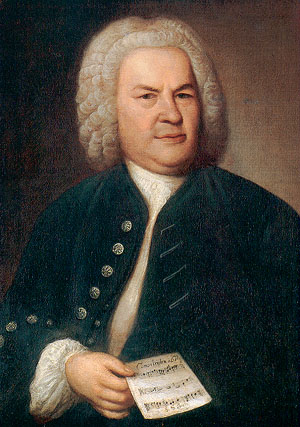Chamber music




Chamber music is a form of classical music composed for a small group of instruments, traditionally a group that could fit in a palace chamber or a large room. Most broadly, it includes any art music that is performed by a small number of performers, with one performer to a part. The most familiar form of chamber music is the string quartet, which is composed of two violins, a viola, and a cello. However, chamber music can involve a wide variety of other instruments, including wind instruments, brass instruments, and piano. Unlike orchestral music, in which each string part is played by a number of performers, chamber music requires each player to perform a unique part.
History[edit]
The origins of chamber music can be traced back to the medieval period, but it was during the Baroque era that the foundation of modern chamber music was laid. During the Classical era, composers such as Joseph Haydn, Wolfgang Amadeus Mozart, and Ludwig van Beethoven composed some of the most enduring works in the chamber music repertoire. Haydn is often credited with developing the string quartet form. In the Romantic era, chamber music began to incorporate a wider array of instruments, and composers such as Johannes Brahms and Franz Schubert made significant contributions to the genre.
Types of Chamber Music[edit]
Chamber music encompasses a variety of ensembles and forms, including:
- String Quartet: Two violins, viola, and cello.
- Piano Trio: Piano, violin, and cello.
- Wind Quintet: Flute, oboe, clarinet, bassoon, and horn.
- Brass Quintet: Two trumpets, horn, trombone, and tuba.
- Piano Quintet: Piano and string quartet.
Characteristics[edit]
Chamber music is characterized by the intimate nature of its performance setting, the conversational interplay between instruments, and the equal importance of each musician's part. This genre demands a high level of technical skill and musical sensitivity from the performers, as the clarity of the music allows individual parts to be distinctly heard.
Performance and Venues[edit]
Chamber music is performed in a variety of venues, from concert halls and churches to more intimate settings such as homes and small auditoriums. The close proximity of the musicians to the audience in these settings enhances the personal and immersive experience of chamber music.
Modern Chamber Music[edit]
In the 20th and 21st centuries, chamber music has continued to evolve, with composers exploring new textures, forms, and combinations of instruments. Contemporary chamber music often blurs the lines between classical and other music genres, incorporating elements of jazz, folk, and electronic music.
Conclusion[edit]
Chamber music remains a vital and dynamic part of the classical music tradition, offering audiences the opportunity to experience the nuanced interplay of instruments and the exceptional artistry of individual musicians. Its rich history and diverse repertoire continue to attract both performers and listeners, ensuring its place in the world of music for generations to come.
Ad. Transform your life with W8MD's Budget GLP-1 injections from $75


W8MD offers a medical weight loss program to lose weight in Philadelphia. Our physician-supervised medical weight loss provides:
- Weight loss injections in NYC (generic and brand names):
- Zepbound / Mounjaro, Wegovy / Ozempic, Saxenda
- Most insurances accepted or discounted self-pay rates. We will obtain insurance prior authorizations if needed.
- Generic GLP1 weight loss injections from $75 for the starting dose.
- Also offer prescription weight loss medications including Phentermine, Qsymia, Diethylpropion, Contrave etc.
NYC weight loss doctor appointmentsNYC weight loss doctor appointments
Start your NYC weight loss journey today at our NYC medical weight loss and Philadelphia medical weight loss clinics.
- Call 718-946-5500 to lose weight in NYC or for medical weight loss in Philadelphia 215-676-2334.
- Tags:NYC medical weight loss, Philadelphia lose weight Zepbound NYC, Budget GLP1 weight loss injections, Wegovy Philadelphia, Wegovy NYC, Philadelphia medical weight loss, Brookly weight loss and Wegovy NYC
|
WikiMD's Wellness Encyclopedia |
| Let Food Be Thy Medicine Medicine Thy Food - Hippocrates |
Medical Disclaimer: WikiMD is not a substitute for professional medical advice. The information on WikiMD is provided as an information resource only, may be incorrect, outdated or misleading, and is not to be used or relied on for any diagnostic or treatment purposes. Please consult your health care provider before making any healthcare decisions or for guidance about a specific medical condition. WikiMD expressly disclaims responsibility, and shall have no liability, for any damages, loss, injury, or liability whatsoever suffered as a result of your reliance on the information contained in this site. By visiting this site you agree to the foregoing terms and conditions, which may from time to time be changed or supplemented by WikiMD. If you do not agree to the foregoing terms and conditions, you should not enter or use this site. See full disclaimer.
Credits:Most images are courtesy of Wikimedia commons, and templates, categories Wikipedia, licensed under CC BY SA or similar.
Translate this page: - East Asian
中文,
日本,
한국어,
South Asian
हिन्दी,
தமிழ்,
తెలుగు,
Urdu,
ಕನ್ನಡ,
Southeast Asian
Indonesian,
Vietnamese,
Thai,
မြန်မာဘာသာ,
বাংলা
European
español,
Deutsch,
français,
Greek,
português do Brasil,
polski,
română,
русский,
Nederlands,
norsk,
svenska,
suomi,
Italian
Middle Eastern & African
عربى,
Turkish,
Persian,
Hebrew,
Afrikaans,
isiZulu,
Kiswahili,
Other
Bulgarian,
Hungarian,
Czech,
Swedish,
മലയാളം,
मराठी,
ਪੰਜਾਬੀ,
ગુજરાતી,
Portuguese,
Ukrainian
